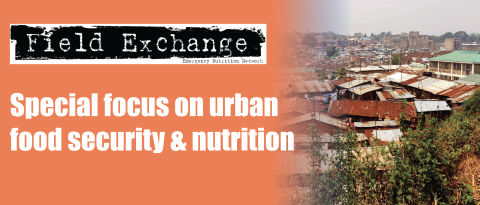The Gaza context
The prolonged stalemate in the Middle East peace process, on-going conflict, continued access restrictions and internal Palestinian divisions have resulted in a protracted crisis where humanitarian assistance is critical to improve food security.
The Gaza Strip is an urban economy, heavily reliant on intensive trade, communication and movement of people. The area has been subjected to an on-going blockade implemented in June 2007, so that in the longer term, its economy is fundamentally unviable under present circumstances. Gaza is currently ‘kept alive’ through external funding/humanitarian assistance and the informal tunnel economy1.
In 2012, a total of 1.6 million people representing 34% of households in Palestine were food insecure, a dramatic rise from 27% only one year before. In the Gaza Strip, food insecurity levels among households surged from 44% to 57% during this time. In Gaza, households with low resilience to food insecurity are spending up to 56% of their disposable income on purchasing food, jeopardising the quality and quantity of food they consume.
Gaza has a very high population density, with 4,500 people per square kilometre2. It is estimated that it will increase from its current population of 1.6 million people today to 2.1 million people by 2020, and 2.7 million people by 2028, resulting in a density of more than 7,562 people per square kilometre3. This demographic explosion compounds chronic food insecurity in Gaza. Infrastructure, electricity, water, sanitation, municipal and social services are already not keeping pace with the needs of this quickly growing population. Furthermore, 70% of the people living in Gaza are refugees4, the vast majority of whom still live in crowded refugee camps with no access to land or water resources.
The people of Gaza remain worse off than they were in the 1990s, despite increases in real per capita gross domestic product (GDP) over the past three years. Unemployment is high and affects women and youth in particular. Although unemployment in the Gaza Strip decreased from 36.6 % in 2011 to 28.2 % in 2012 largely due to expansion of the construction sector, wages remained low with many highly dependent on humanitarian assistance. Gaza’s per capita GDP is expected to grow only modestly in the coming years, making it ever more difficult for Gazans to secure a decent living. The challenges will only become more acute, particularly if the current political status quo continues.
1The Gaza Strip smuggling tunnels are passages that have been dug under the Philadelphi Corridor, a narrow strip of land, 14 km (8.699 miles) in length, situated along the border between the Gaza Strip and Egypt. For a more detailed write-up, see: Gaza’s Tunnel Phenomenon: The Unintended Dynamics of Israel’s Siege. Nicolas Pelham. Journal of Palestine Studies, Vol 41, no. 4 (summer 2012). P6. Full article at: http://palestinestudies.org/journals.aspx?id=11424&jid=1&href=fulltext
2UNSCO, 2012. "Gaza in 2020: A liveable place?" United Nations Country Team in the occupied Palestinian territory. August 2012.
3Ibid.
4These refugees fall under the protection of the United Nations Relief and Works Agency for Palestine Refugees in the Near East (UNRWA). UNRWA deals specifically with Palestine refugees in its five areas of operation in Jordan, Lebanon, the Syrian Arab Republic, West Bank and the Gaza Strip. UNHCR is responsible for Palestine refugees outside UNRWA's areas of operation.
Imported from FEX website


